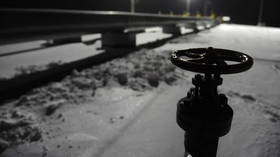European gas prices surge after Kursk incursion
The cost of gas futures at the hub in the Netherlands has jumped to its highest level since December
Natural gas prices in Western Europe continued to climb on Monday, according to data from the London Intercontinental Exchange (ICE).
The cost of gas futures for September delivery at the Title Transfer Facility (TTF) hub in the Netherlands increased by roughly 6% to $490 per thousand cubic meters, or €42.82 per megawatt-hour in household terms, before retreating slightly. The last time gas futures were at this level was in early December.
Gas prices began to surge last week, just as Ukrainian forces launched their cross-border incursion into Russia’s Kursk Region.
According to Russian media, investors are concerned about the possible impact of the fighting on the transit of Russian pipeline gas to the EU via Ukraine’s transit network.
One of the towns affected by the clashes is Sudzha, located some 9km from the border. The town hosts the last remaining gas metering station in operation between Ukraine and Russia.
On Friday, a spokesman for the Russian energy giant Gazprom, Sergey Kupriyanov, warned that the fighting near Sudzha would drive the prices of natural gas higher.
On Monday, Kupriyanov said gas transit through Sudzha was continuing in line with contracted volumes.
Ukraine-related sanctions introduced by Brussels against Russia have not targeted pipeline gas supplies so far. Many European Union member states, including Poland, Bulgaria, Finland, the Netherlands, and Denmark, halted their imports voluntarily. However, Austria, Hungary, Slovakia, and Italy are still importing Russian pipeline gas.
Slovakia reported last week that incoming volumes had decreased, noting that “Russian gas supplies through Ukraine towards Slovakia are seriously endangered” by the fighting.
The gas transit agreement between Gazprom and Ukraine expires at the end of this year, and Kiev has said it has no plans to extend it. It was reported last month that several EU countries were discussing ways to allow the flow of gas to continue via Ukraine’s transit network beyond 2024.






Comments are closed.